The ‘what if’ is top of mind when you are in an insurgency-hit place. The immediacy of experience-offensives like landscape and language, food or culture doesn’t negate the nag altogether but pushes it a bit down. Nevertheless it resurfaces every now and then – along those dark ghat stretches, jungle paths, by the secluded waterfalls. Even in the midst of milling mankind where you see not one familiar face but feel a hundred prying eyes boring into the back of your head. You have come too far, seen quite a bit, to let the safety question cut in like a coulter, but it is there.
The Maoist killing of 13 security personnel in Bastar, Chhattisgarh, in three separate incidents last week has seen the resurgence of a historic apprehension: ‘Are tourists safe in the State?’ The question is all the more pertinent today as the state tourism department has been promoting its ancient temples and archaeological sites, caves, jungles and waterfalls quite proactively of late. Bloggers, travel writers and festival enthusiasts have been hosted by the department who in turn have written mostly positively, I reckon. I myself have made a number of forays into this rural wonderland working on a road tripping guidebook; self-drove from Jashpur in the northern corner to Jagdalpur, headquarters of Bastar district, down south, taking more than a month. In an earlier post, I even listed my top three lures as the ‘finest folks you’d find anywhere’ followed by listed attractions and the (roadside) food. I rode on a motorbike through the jungles – from where I was warned to stay away; I hung out at cockfights in remote places where my guide refused to accompany me in his attempts to dissuade me from going. Then, I also had to answer many queries by locals in many places, mostly when I went off-piste. I understood poverty and isolation made people cunning, even dangerous but curious was a first.
A typical Q&A session would go like this:
“Sir, where are you from?”
“Raipur.”
“No, you are not from Raipur.”
“Fine, I’m from Delhi.”
“See, I knew it. What are you doing here?”
A smile would open up the seersucker landscape of their wrinkled faces when I told them I was working on a ‘tourism book’ and elatedly they would tell me about sights nearby. It surprised me immensely that such a victimised lot could be more than just friendly and courtly. Many a time these conversations led to more insightful and poignant discussions on topics from mining to tribal appeasement (The chief minister is popularly called the ‘chawal baba’ – or ‘rice god’ – for his photograph could be found on all publicity material related to subsidised rice supply for the indigenous communities.), conflict zones and of course tourism.
“We too just want to go home”
The officer was playing ‘Smash the office’ on his smartphone when I met him on the train from Delhi to Chhattisgarh during my first trip there a few months ago. He was a deputy commandant with the Border Security Force on his way to a BSF camp in the restive Kanker (in the attacks last week, one BSF jawan was killed in a gunfire exchange with the Maoists here). Since he didn’t want to be named in what I was taking down, I will just call him ‘officer.’ He said he played ‘Smash’ whenever he felt restless and frustrated – which he did each time he returned from a holiday meeting his wife and kids in Jaipur. The officer claimed he felt a sort of calm as he went about bashing up computers and tables and chairs, what if with two furious thumbs.
“Now, how do I know if I will ever see my family again!” He muttered to the loud accompaniment of crashing tables.
It was after six years’ service with the Rajasthan Police that he decided to join the BSF; a decision he is proud to have made despite the hardships of being posted in a ‘red corridor.’ He remembered his mother beaming with pride when people would come to his home for attesting certificates in his ancestral village. It was because of the BSF he could see so many places and even fly for the first time in his life – an experience etched in memory though not for the flight itself.
“I had no idea about luggage limitations and I was carrying all my books; I had to part with a big chunk of my resettlement allowance to pay the excess baggage fine.”
Some years ago he was posted in Tripura where he says he felt wretched and forlorn like never before. It might have been the distances but he was affected more by the utter poverty and the petty crimes that ensued from it, which was all around him. The tribal communities staying along the border would smuggle their cattle across to Bangladesh where it would be slaughtered and sold. They would then return to India and claim compensation. But he would feel most depressed watching people celebrate Holi or Diwali. ‘What paap did I do to be away from my loved ones on such joyous occasions,’ he used to think.
The officer was only recently transferred to Kanker and in the first two months four Maoists had surrendered. Those who had laid down arms were invaluable for their knowledge of the terrain and were hence used as trackers and guides by the security forces. Though he feels for these ‘misled’ young tribal men and women (“they had never even seen a 100-rupee note”) he spares no sympathy for the Maoists.
“But I have no soft corner for them as they kill and they kill brutally,” he said. “I choke on my heart when my colleagues are ‘packed up’ and sent home.” ‘Pack up’ is slang for sending someone back in a coffin. All the deaths he has seen and heard about have only made him grittier. Holding an unwavering gaze he told me that whole Naxal issue was something which could be solved in 15 – 20 days flat – in which the entire Abhujmaad* area could be ‘cleansed.’ But easy said as it would take a humungous political will to break the many unholy nexuses that thrived. A sudden resignation crept into his voice and he looked away. His eyes grew uncharacteristically soft and bleary. He said he was fighting a battle that slipped away from his conscience and comprehension the more he thought about it. ‘At the end of the day both we and the Naxals are the same – we just want to go home to our family.’ Dreariness and desperation had caught up with him and he was looking to somehow finish his tenure. What he looked forward to was the haat day – market day in the nearby village; he’d start discussing with the other members of his elite battalion what to buy several days in advance. The wild fowl which was a rarity even in remote areas was a particular favourite. The officer loved to cook Rajasthani laal maas or the ‘fiery red’ chicken curry – which wafted in more memories of home.
“On my last trip home I downloaded an advanced version of ‘Smash’ where I can bash up the boss in the end,” he informed me with an eerie Apollyonic smile.
*The historic Dandakaranya Forests where Lord Ram is supposed to have spent his exiled years spreads across parts of Chhattisgarh, Orissa and Andhra Pradesh. The ‘Maad’ division, part of Dandakaranya, is a guerrilla stronghold of the Maoists in Chhattisgarh and comprises some of the prettiest, lushest stretches of forests you’d ever see. Eventually it became ‘Abhujmaad’ for the outsiders’ inability to understand the place; ‘abhuj’ means something that cannot be figured out. Aside: Abhujmaad also reportedly has billions of dollars’ worth of metals and minerals buried beneath.
Fools rushing in?
‘Only when the government forces come to attack us carrying guns do we attack them in self-defence. Our repeated appeal to the lower-level personnel in the police and paramilitary forces is – please, do not betray your own class, don’t serve the exploiting class, don’t attack the people and revolutionaries on your own, consciously, in a revengeful manner, join hands with the masses and turn your guns against the real enemies and not your brothers and sisters.’
Ganapathi, Maoist supreme commander, quoted in ‘Hello, Bastar’ by journalist Rahul Pandita.
My fleeting forays into ‘stay away’ territories had a feel-good quality about them – my book would feature some hitherto unseen and unheard of facets of the indigenous Chhattisgarhi and his way of life. Contrary to an official ‘briefing’ I decided there would be little point in muting mentions of Naxals (‘Naxal’ and ‘Maoist’ are used interchangeably by the cops as well as the locals), their struggles and its aftermaths. Unless I wanted to traduce local lore. Or turn a blind eye towards what defined the land. It would be criminal to ignore the Maoist burial sites flanking the road that passed through the forests of Barsoor: Tall, wooden slabs were erected over them which featured the life of the dead comrades – in simple, basic, Santhal-style paintings. Not talking about them would be a disservice to a great land and its culture. Then to the reader. While mainstream media vilified them and the armed forces continued to hunt them, the fact remained that the Maoist enjoyed the unconditional and unstinted support of the adivasi who believed that the armed struggle was to protect their rights and their backyard. Blankets were draped over many of these memorials as it was winter.
And to be honest, these singular sorties of mine weren’t bereft of the bravado either, however ephemeral; I was traversing through another world revolving around a different period in time itself where a fully clothed person was still gawked at and those with fair skin were a ‘Russi’ (or Russian – who helped set up the Bhilai Steel Plant in 1955, the first foreigners in these parts). That was till I met some tourists – a lady from Switzerland and two guys from England – who had been staying in Chhattisgarh during the entire six-month duration of their visas and heard about many others more who had been coming here regularly for several years. They stayed with the tribals, hosted in their hutments, ate their jowar and chapra chutney and sauntered about in lungis. My bubble was pricked by tales these guys shared with me – their events had context, their understanding came with a well-entrenched perspective I just had my pinky on. One told me about the proxy government army, the dreaded ‘Salwa Judum’ which turned brother against brother and son against father. Apparently considered a masterstroke in tactical outmanoeuvring of the Maoist who managed to embed himself in tribal land, a Salwa Judum member gets a salary reportedly in the range of Rs 20,000 – 30,000. The hungry tribal was thus pushed into a wracking quagmire forced into making up his mind whether to fight for ideology and rights or money. As reports of brutality by the Salwa Judum piled up, the government, fearing further alienation of the tribals, disbanded it. Actually renamed it to ‘Maa Danteshwari Adivasi Swabhimani Manch.’
“The snake only shed its old skin for a new one,” said one English guy who had been to Bastar three years in a row.
Last week’s spate of attacks on the armed forces could be an act of desperation due to dwindling recruit numbers and a ‘confidence inducing’ measure; part of a tactical counter offensive campaign (TCOC) usually undertaken from April onwards till mid-June. Or maybe it was targeting the increasing presence of armed forces in the interior areas. Then again, being on the eve of a month-long campaign by the current government which was about to get started from April 14, the political angle too cannot be ruled out. As possible ground reasons for the gruesome attacks get bandied about, experts and analysts continue to churn out speculations and the media faithfully echoing governing sentiments, the real way out of the bloody war gets smudged. The route map for lasting peace is crumpled up and binned amidst knee-jerk reactions, worked up sentiments and hidden agendas.
“For there to be a lasting solution, there has to be more inclusiveness in growth,” says Gangaram Kashyap, leader of the Dhruva tribe, which is one of the major tribes of Bastar.
I met Kashyap at the Anthropological Museum in Jagdalpur.
“Look,” he said pointing to a map which showed the distribution of the tribal population in Bastar. “Close to 75 per cent of the district is marked as tribal areas. How can anyone even think of development where the tribals are kept out?”
According to Kashyap tourism was the only economic activity spearheaded by the government which also benefited the tribal communities.
“When a tourist buys a Dhokra art or Godna painting, pays for a ticket to enter Kutumsar Cave or hires a boat in Chitrakote there is some local who would’ve earned his meal ticket.”
“Don’t forget the mahua and salfi,” I pointed out to Kashyap. I had by then downed several bottles of the local brews made by the tribals and sold from extended billets by the roadside usually with a pallet and a snotty kid or two on it. There was the delectable potato fry or samosas with imli chutney to go with it.
And sometimes there would also be stories of the land, tales of the people’s struggle and sharing of dreams by a local – a stranger till a while ago.


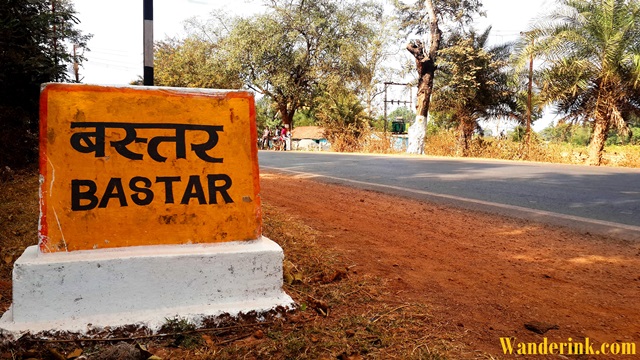
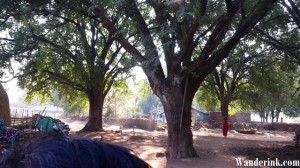
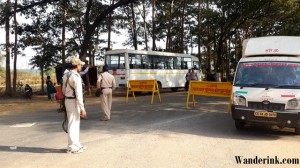
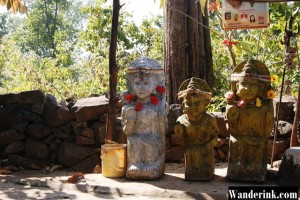
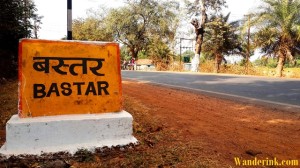
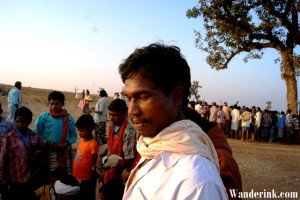
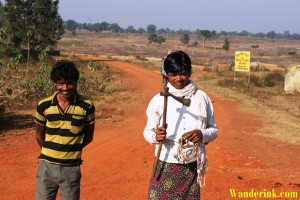
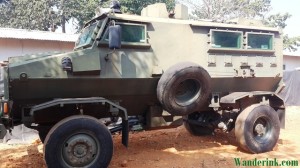
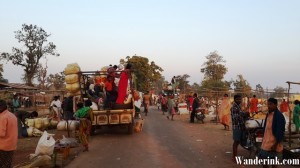
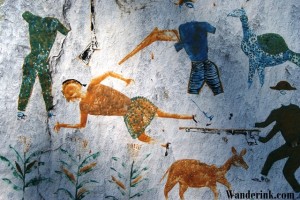
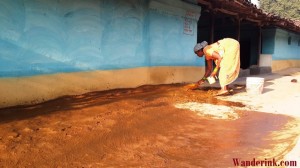









Atal Bihari Vajpayee once said ‘Tourism is the anti-dote to terrorism’. In my opinion it is impossible to hate people you have visited and connected with.
Sadly but there is a lot of hatred – and dread – at play out there. In the ensuing chaos land rights, livelihoods and life itself has been trampled upon.
There needs to be a greater push towards tourism to break down the walls of prejudice. I haven’t spent as much time as you, but I’ve been touched by the warmth & simplicity
They are indeed great folks…a rare bunch. You really end up wondering what to believe.